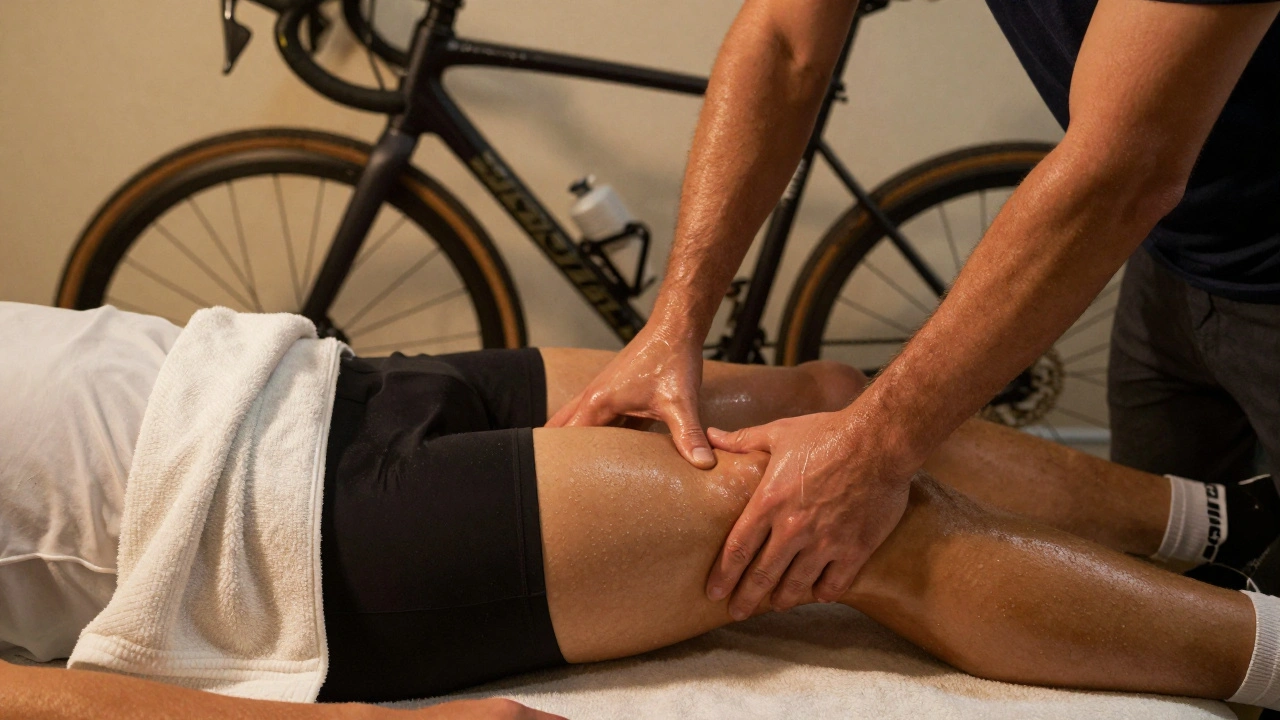Sports therapy: practical recovery and performance tips
If you train, play sports, or just move a lot, sports therapy helps you stay on track. It’s not fancy — it’s specific care that speeds recovery, prevents repeat injuries, and helps you get stronger without setbacks. Below you’ll find clear, useful actions you can use this week.
What sports therapy actually does
Sports therapy uses hands-on care, movement plans, and simple tools to fix what’s causing pain and to stop it coming back. Think sports massage to ease tight muscles, targeted exercises to rebuild strength, and movement checks to fix a bad pattern that keeps causing trouble. It’s different from general physio because it focuses on returning you to sport quickly and safely.
Start by spotting the real problem. If pain limits performance, changes how you move, or keeps coming back after rest, that’s your cue to act. A therapist will check range of motion, strength, and how you run, jump, or lift. From there they’ll design a short plan: hands-on work, a few rehab moves, and advice on training load so you don’t push too hard too soon.
Simple steps you can use now
1) Use targeted soft-tissue work: Foam rolling or a sports massage once every 1–3 weeks can lower muscle tightness and speed recovery. If something is sore after a hard session, 10 minutes of foam rolling and light movement that evening helps circulation without adding stress.
2) Swap static for dynamic before training: Warm up with dynamic moves—leg swings, hip circles, shoulder rolls—so your body moves the way the sport needs. Save static stretches for after training when tissues are warm.
3) Add two rehab exercises: Pick one exercise for strength and one for mobility tailored to your weak spot. For example, single-leg Romanian deadlifts for hamstring strength and hip-flexor stretches for better stride. Do them 3 times a week, 2–3 sets each.
4) Manage load: Increase training volume by no more than 10% per week. If you feel persistent tiredness, cut volume and keep intensity low for a few days. Small drops prevent big injuries.
5) Sleep, fuel, and gut care matter: Recovery isn’t just hands-on work. Aim for consistent sleep, enough protein after sessions, and simple gut-friendly foods (fiber, fermented foods) to help repair and reduce inflammation.
When to see a pro: persistent pain beyond two weeks, loss of function, swelling, or repeated injuries during the same activity. A therapist can rule out serious issues, give a clear rehab plan, and advise on sports massage timing, taping, or braces if needed.
Use these steps to make training safer and more productive. Small changes—better warm-ups, targeted rehab, and smart load management—often prevent the biggest setbacks. If you want, check the related posts on sports massage, injury prevention, and recovery to build a plan that fits your sport and schedule.

Unlocking the Benefits of Sports Massage for Cyclists
Sports massage helps cyclists recover faster, reduce muscle tightness, and prevent injuries. Learn how targeted therapy improves performance, when to schedule sessions, and how to find the right therapist.
Read More
Unlock the Hidden Benefits of Sports Massage for Peak Athletic Performance
Sports massage offers a myriad of benefits to athletes, ranging from muscle recovery to injury prevention. This article delves into the various advantages, tips, and interesting facts about sports massage to help athletes maximize their performance and well-being.
Read More